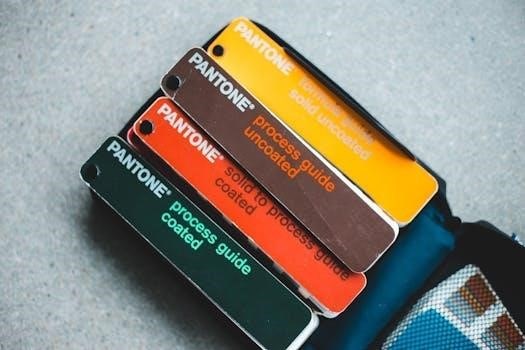guide paint

guide paint
Guide to Paint
Painting is fundamental for renovations and aesthetics, offering diverse options to enhance spaces. Paints improve a house’s look and assist you to renovate your home in a beautiful, more aesthetic way. Choosing the right paint involves understanding types, textures, application, and appropriate techniques for surfaces.
Types of Paint
Selecting the appropriate paint is crucial for achieving desired results. Numerous paint varieties cater to diverse needs and surfaces. Oil paints, ideal as primers, undercoats, and finish coats, offer durability. Emulsion paints, containing binding materials like polyvinyl acetate and polystyrene, are versatile for plastered walls, concrete, and ceilings. Enamel paints are used for various applications. Bituminous paints offer protection, while aluminum paint, a mix of aluminum particles and varnish, provides unique aesthetics. Anti-corrosive paints, synthetic rubber paints offer chemical and weather protection, and cement paints are some other options.
Consider distemper paints for interiors and exteriors, and epoxy paints, suited for floor covering. Understanding each paint’s performance features is essential. The best emulsion paint offers versatile applications. Each paint type possesses unique characteristics, making it suitable for specific projects. Choosing the right paint is the first step towards a successful painting endeavor. Selecting paints based on their unique set of uses or applications ensures optimal results in painting projects.
Paint Application Techniques
Effective paint application is as important as the paint itself. Brush, roller, and spray painting are common techniques, each offering distinct advantages. Brush application, the oldest and most well-known method, suits intricate objects, awkward corners, and rough surfaces. Roller coating efficiently covers large, flatter areas. Spray painting, prevalent in industrial manufacturing, offers versatility and economic viability. Flow coating and dipping are other industrial techniques.
Proper preparation is essential for any method. Understanding the nuances of each technique ensures a professional finish. Consider factors like surface type, paint viscosity, and desired texture. Whether using air-atomized, airless, electrostatic, or high-volume, low-pressure methods, mastering application techniques transforms living spaces. Explore brush, roller, spray, pads, and sponging techniques for stunning results. These techniques enhance the artistic process, from texturing to speeding up drying time. Mastering application can change your final result.
Brush Application
Brush application, an age-old technique, excels in detailed work, tight spaces, trims, and corners. Its versatility allows for perfecting various projects. Brush application is the oldest and most well-known type of paint application. Selecting the right brush size is crucial⁚ smaller brushes (1-2 inches) suit small spaces, while larger brushes (4-5 inches) are ideal for walls. For rough surfaces, brush application remains the best method. Use the side to side then up and down technique.
Consider brush size relative to the project at hand. Soft brushes are suitable for wet-on-wet techniques, preventing color blending. Cleaning the brush after each stroke is crucial. The brushes are available in various sizes⁚ 1 to 2 inches- for small spaces, tight trim areas, touch-ups and detail work 2) 2.5 to 3 inches- for any trim and corner work 3) 4 to 5 inches- for larger areas likes walls or side panelling.
Roller Coating
Roller coating is a widely adopted paint application method, ideal for covering large, flat surfaces efficiently. This technique employs a cylindrical roller to evenly distribute paint, ensuring a consistent finish. Roller coating is considered the most traditional and widely used technique for painting walls, ceilings, and other large surfaces.
The selection of the appropriate roller cover is essential for optimal results. Factors to consider include the surface texture, paint type, and desired finish. For smooth surfaces, a short-nap roller is recommended, while rough surfaces benefit from a longer-nap roller. Roller coating also offers the advantage of speed and ease of use, making it suitable for both professional painters and DIY enthusiasts. To achieve a professional-looking finish, it is important to maintain a wet edge and avoid over-rolling. Over-rolling can lead to uneven paint distribution and visible roller marks, detracting from the overall appearance.
Spray Painting
Spray painting is a versatile and economically viable paint application technique prevalent among industrial manufacturers. It employs a variety of different spray methods currently in use.
This method involves atomizing paint into a fine mist and applying it to a surface using compressed air. Spray painting is particularly well-suited for achieving a smooth, even finish on intricate or hard-to-reach areas. It is ideal for applying coatings to automobiles, appliances, and furniture. However, spray painting requires specialized equipment, including a spray gun, compressor, and appropriate ventilation. Proper surface preparation is crucial to ensure optimal paint adhesion and a flawless finish. Masking off areas that are not to be painted is essential to prevent overspray. While spray painting offers numerous advantages, it can be more complex and require more practice than other painting techniques.
Flow Coating
Flow coating is an industrial painting application method where paint is applied by flowing it over the surface of an object. This technique is particularly useful for coating complex shapes and hard-to-reach areas. The object is typically placed on a conveyor system, and the paint is dispensed from nozzles above, allowing it to cascade down and cover all surfaces.
Excess paint is collected and recirculated, minimizing waste. Flow coating is often used for applying primers, base coats, and topcoats to metal parts and components. It provides a uniform coating thickness and excellent coverage. However, careful control of paint viscosity, flow rate, and object orientation is necessary to achieve optimal results. This method is well-suited for high-volume production and can be automated for increased efficiency. While flow coating offers several advantages, it may not be suitable for all types of paints or surfaces.
Impasto Technique
Impasto is a painting technique characterized by applying paint thickly, often directly from the tube, onto the canvas. This creates a textured surface where the brush or palette knife strokes are clearly visible. The impasto technique adds dimension and depth to the artwork, allowing light to play off the raised areas, creating shadows and highlights. This method is best achieved using thick-bodied paints like oils or acrylics, and a stiff brush or palette knife is often preferred for application.

The goal is to build up layers of paint, creating a tactile and visually engaging surface. Impasto can be used to emphasize certain areas of the painting or to create an overall textured effect. It is a versatile technique that can be adapted to various styles and subjects, adding a unique expressive quality to the artwork. Variations in paint thickness and direction can further enhance the visual impact of the impasto technique, making it a powerful tool for artists seeking to add depth and texture to their work.
Palette Knife Techniques
Palette knife techniques offer a diverse range of approaches for applying paint, enabling artists to create unique textures and effects. Spreading involves using the flat side of the knife to apply paint smoothly, ideal for creating backgrounds or blending colors seamlessly. Scraping removes paint to reveal underlying layers, adding depth and visual interest. Stippling uses the knife’s edge to dab paint onto the surface, creating a textured effect reminiscent of pointillism. Feathering softens edges by lightly dragging the knife through wet paint, creating subtle transitions.

Loading the knife with varying amounts of paint allows for controlled application and textured strokes. These techniques enhance the artistic process, from texturing and detailing to accelerating application and drying times. Integrating these methods can revitalize artwork, whether one is a beginner or an experienced artist. Palette knives offer a unique way to engage with the paint, fostering spontaneity and expressiveness. These methods are not just tools but extensions of artistic vision, enriching texture and creativity.
Paint Textures
Paint textures significantly influence the visual and tactile experience of a painted surface, stimulating both sight and touch. The texture depends on the paint itself and the application methods used. Impasto, for example, creates a thick, dimensional texture using the paint directly from the tube, often applied with a palette knife or stiff brush. This technique adds depth and visual interest through raised surfaces.
Various tools and techniques can create different textures. Sponging produces a mottled, uneven surface, while rag rolling creates a textured pattern by rolling a paint-soaked rag across the wall. Stippling involves dabbing paint onto the surface with a brush or sponge, resulting in a dotted texture. Sanding or adding aggregates can create rough or gritty textures. These techniques are not limited to walls; they can enhance furniture, artwork, and decorative objects.

Ultimately, paint textures transform surfaces, adding depth, character, and visual appeal to any project. The right texture can complement a room’s décor, enhance architectural features, or create a unique artistic statement.

Paint Uses
Paint extends far beyond mere aesthetics, serving numerous practical and protective functions across various industries and applications. In construction, paint enhances the look of buildings and acts as a protective barrier against weather elements, preventing corrosion and decay. Anti-corrosive paints are specifically designed to protect metal surfaces from rust and chemical damage, extending their lifespan.
Within homes, paint safeguards walls from moisture, stains, and everyday wear and tear. Different paint types cater to specific needs; for example, epoxy paints are used for floor coverings due to their durability and resistance to chemicals, while specialized paints are formulated for fabrics, allowing for customization and artistic expression on textiles.
Moreover, paint plays a crucial role in renovation projects, revitalizing old surfaces and creating a fresh, updated look. Professionals leverage paint’s versatility for diverse applications, enhancing appearance and providing essential protection. From interior walls to exterior structures, paint remains a fundamental element in construction, design, and maintenance.